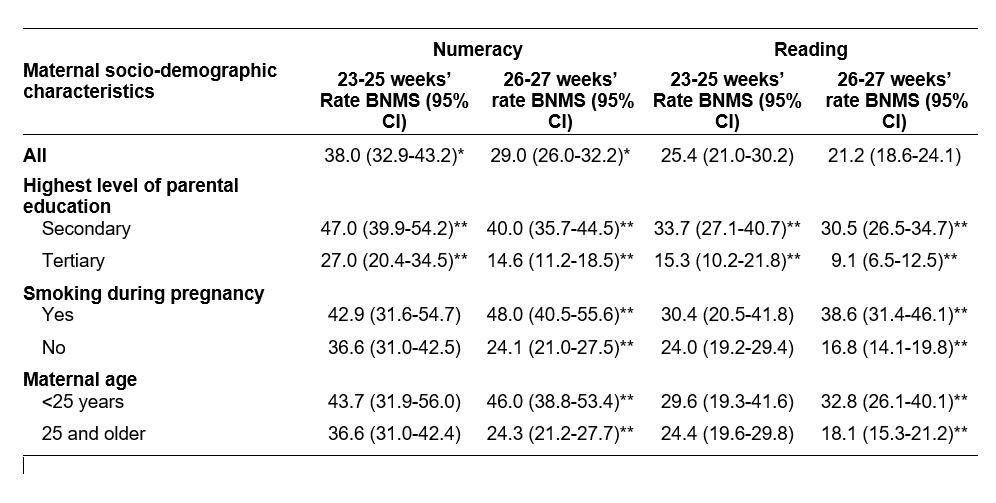Neonatology
Session: Neonatal Follow-up 2
514 - Risk factors for poor primary school performance in extremely preterm infants in New South Wales, Australia
Saturday, May 4, 2024
3:30 PM - 6:00 PM ET
Poster Number: 514
Publication Number: 514.1451
Publication Number: 514.1451

Nele Legge, MD (she/her/hers)
Staff Specialist Neonatologist
Liverpool Hospital
Liverpool, New South Wales, Australia
Presenting Author(s)
Background: Recent advancements in perinatal and neonatal intensive care have significantly increased the survival rates of extremely preterm infants. Information on primary school performance and risk factors for poor performance is vital for parents, clinicians’, and policy makers to be able to commission, evaluate and improve healthcare and educational resources. Our study is the first to describe outcomes, gathered in situ at school rather than in formal clinic setting.
Objective: Description of primary school outcomes in children born extremely preterm and identification of the most influential risk factors for poor school performance.
Design/Methods: We included all surviving extremely preterm infants (23-27 completed weeks’ gestation) born in New South Wales, Australia 2001-2011 with a Grade-3 (aged 8-9 years) school test record. Outcomes included scoring at or below the national minimum standard (BNMS) in the National Assessment Program – Literacy and Numeracy (NAPLAN). We compared outcomes by gestational age (23-25 weeks’ vs. 26-27 weeks’) and maternal socio-demographic and pregnancy characteristics using univariate frequency distributions with Clopper-Pearson 95% confidence intervals and Chi-Square statistic, reporting only significant effects (p < 0.05).
Results: Included were 459 and 999 children born at 23-25 weeks and 26-27 weeks, respectively. Of these 78.9% and 88.3% had recorded test scores. Rates of those BNMS were significantly higher for children born 23-25 week’s gestation than 26-27 weeks’ in numeracy, but not reading (Table 1). Highest parental education, smoking during pregnancy and maternal age had the greatest influence on rates. In both gestational age groups, children with parents with secondary education, had between 1.7- and 3.4-fold higher rates of scoring BNMS than parents with tertiary education. Maternal country of birth, parity, socio-economic disadvantage, rural/remote residence, preeclampsia and diabetes did not significantly impact outcomes.
Conclusion(s): Most extremely preterm infants sit state exams in primary school and a majority perform above the national minimum standard. Their results should permit cautious optimism for clinicians and parents regarding cognitive outcomes for infants born extremely prematurely. Risk factors for poor exam performance correlate with demographic factors including maternal age < 25 years, smoking in pregnancy and highest parental education. Since these risk factors are also identified as main risk factors for preterm birth and are modifiable this study advocates for targeted public health initiatives in vulnerable communities.

